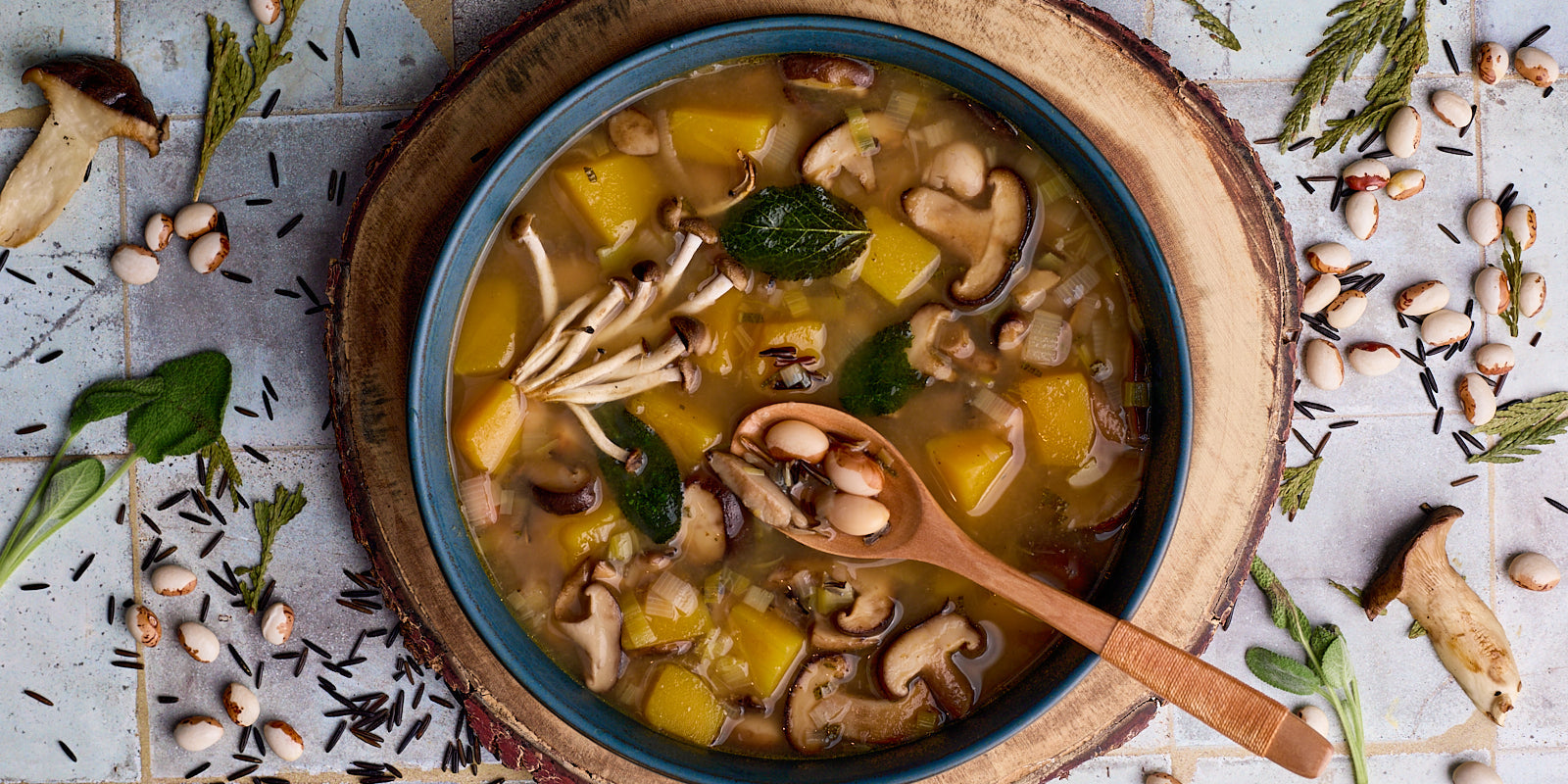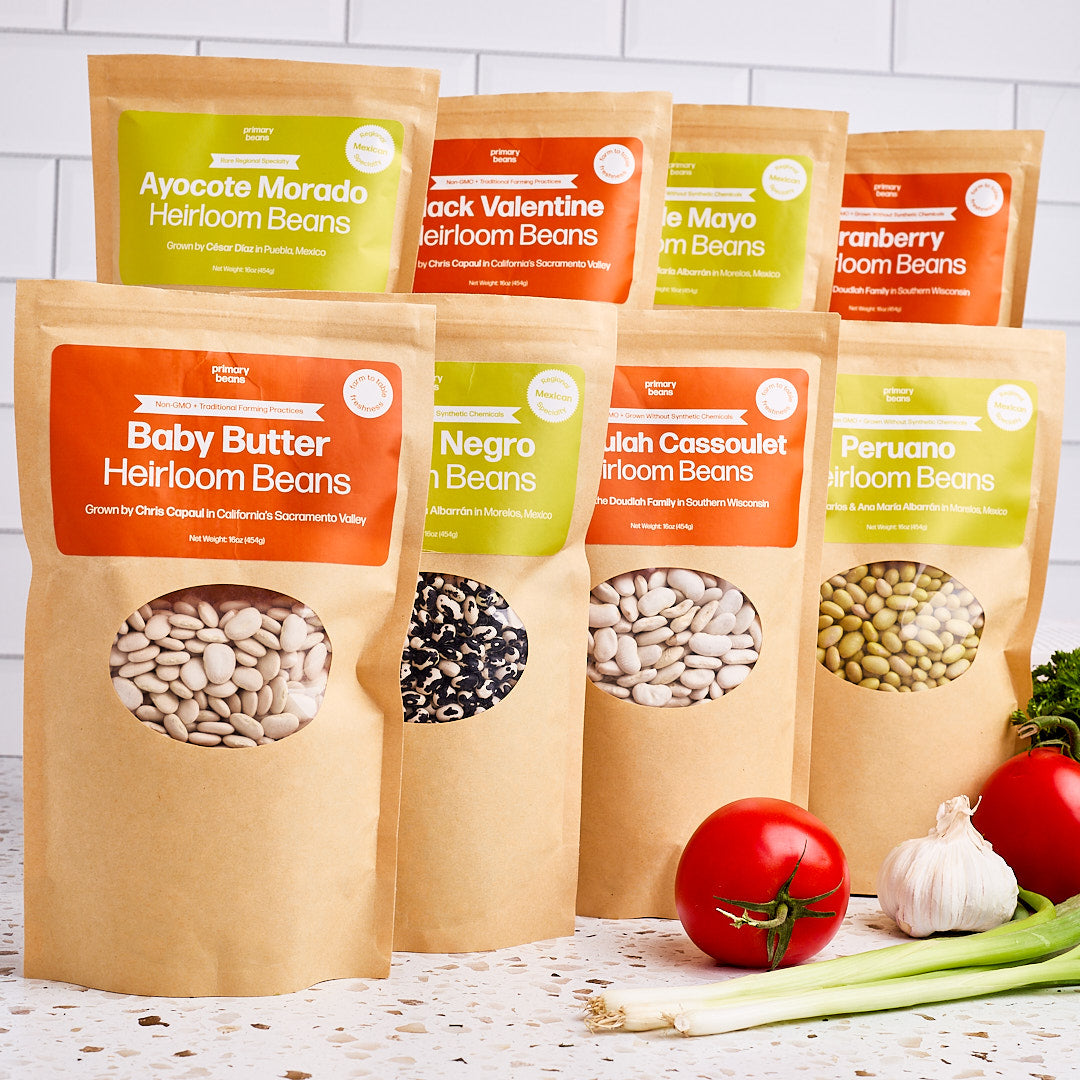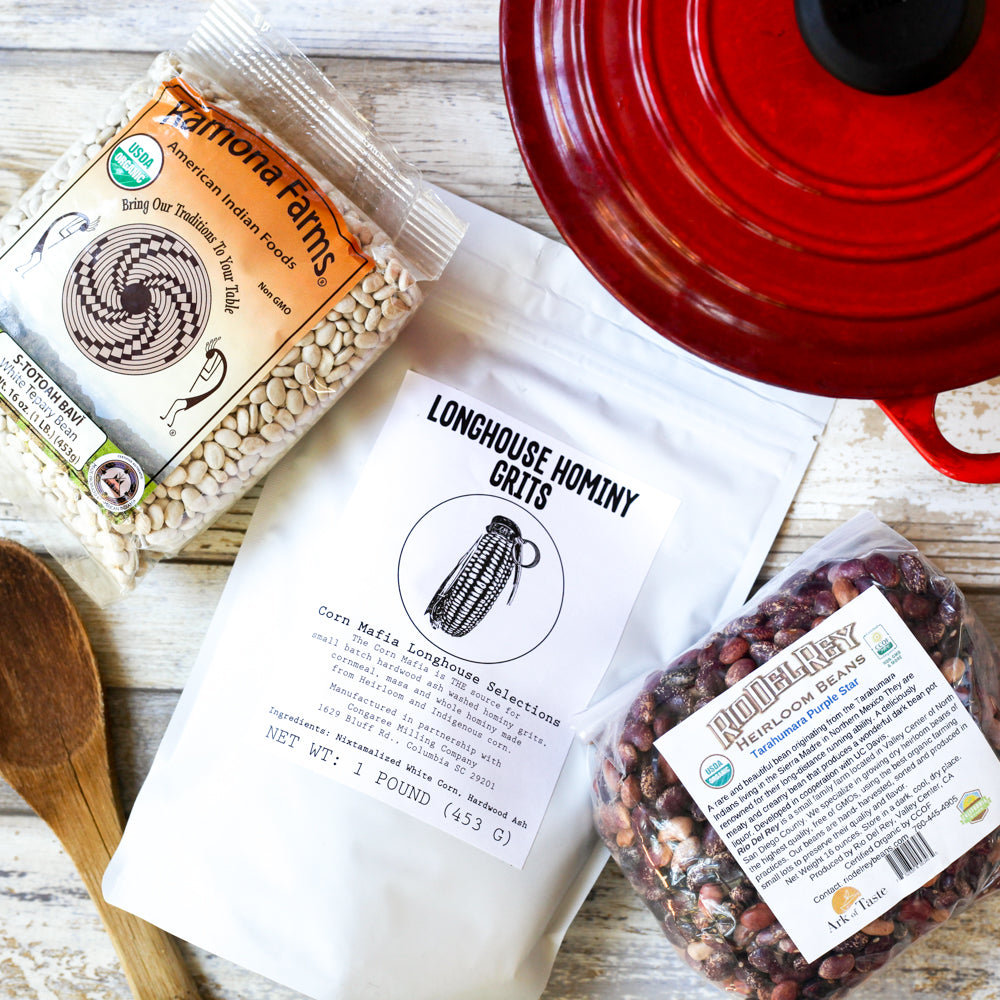10.99 FLAT RATE SHIPPING
10.99 FLAT RATE SHIPPING
SHOP

Hidasta Shield Bean And Wild Rice Soup
September 17, 2024 3 min read
Celebrate the rich flavors of Indigenous ingredients with this hearty Hidatsa Shield Bean and Wild Rice Soup. Native American-grown wild rice pairs beautifully with Hidatsa Shield beans, winter squash, earthy mushrooms, and fragrant sage. Infused with a touch of cedar leaves, this comforting soup offers a woodsy, nourishing experience that honors Indigenous culinary traditions.
My Nod To The Sioux Chef
I'm one of those people who reads cookbooks cover to cover and recently I've been devouring Sean Sherman's The Sioux Chef. So when we had the opportunity to feature Native American Wild Rice and Hidatsa Shield Beans in the bean club I wanted to create a recipe that was as decolonized as possible. I wanted to limit myself to ingredients that are Indigenous but easily found at the grocery store. My two exceptions are garlic and black pepper. The garlic we find in the store is not native but there are native species of garlic so I allowed it. I highly encourage growing native species in your garden. My only real cheat is black pepper which is actually a dried berry from India, not from the Americas and not a pepper at all. Sean Sherman uses sumac instead which gives a more bright, citrusy flavor and I highly encourage you to try it! I've suggested non-native alternatives where it is difficult to source the preferred native, like the cedar. See more on that below.
Creamy, Delicious Hidatsa Shield Beans
In my Hidatsa Bean and Wild Rice Soup recipe, the Organic Heirloom Hidatsa Shield Figure Beans from Blue House Farm play a starring role, bringing a creamy texture and rich flavor to the dish. These heirloom beans, known for their thin skins and striking colors that remain vibrant even after cooking, are a tribute to the agricultural heritage of the Hidatsa people of the Missouri River Valley. Their large, white bodies, adorned with speckled orange and maroon "shields," make them visually stunning, while their firm texture and slightly nutty taste add depth to the soup. A rare and historical bean, once recognized on the Slow Food Ark of Taste in 2005, the Hidatsa Shield Figure bean thrives in small, sustainable farms like Blue House Farm. Its unique story and delicious qualities make it a perfect ingredient for a hearty and flavorful wild rice soup.
COOKING NOTES
Soaking Beans
I rarely soak beans but in this recipe an overnight soak allows you to cook the beans and squash at the same time. If you're in a hurry you can do a quick soak by pouring boiling water over the beans and soaking for 2-4 hours.
Cooking Wild Rice
You may be tempted to make this a one pot dish and just dump the wild rice right into the soup. That's typically my inclination but there is an important reason for that second pot. Wild rice will go from firm to mushy quickly so it's important to cook it separately and combine it to the soup at the last minute. Keep an eye on it and test frequently starting at 40 minutes. Some of the rice will pop even before it's done so don't freak out and take it off the stove until you've tasted it.
Choosing And Preparing Winter Squash
When choosing winter squash for your bean and wild rice soup, opt for varieties like butternut, acorn, or kabocha, as they hold up well in soups and add a natural sweetness. Look for squash with firm, blemish-free skin and a deep, rich colour. Before adding it to your soup, peel the squash with a sharp vegetable peeler, then halve it and scoop out the seeds. Cut the flesh into bite-sized cubes for even cooking.
Sourcing Cedar Leaves
Cedar gives this soup a subtle woodsy flavor that is distinctive. You can use other herbs like thyme or rosemary which will be delicious but a different flavor. Sourcing cedar branches and cedar leaves is not exactly as easy as running to the grocery store. If you look for cedar branches online you will mostly find them for decorative purposes which you should never use in food because they are treated with chemicals. If you are lucky enough to have cedar trees around that are not sprayed with any pesticides, then foraging for a branch is your best bet. I don't have any cedar trees around me but I did find whole cedar leaves at Mountain Rose Herbs.
Hidasta Shield Bean and Wild Rice Soup
Rated 5.0 stars by 1 users
Category
Soup
Cuisine
Indigenous
Servings
4
A comforting Hidatsa Shield Bean and Wild Rice Soup featuring wild rice, mushrooms, squash, sage, and cedar leaves, celebrating Indigenous ingredients.
Lisa Riznikove

Ingredients
-
1 cup Hidatsa Shield Beans
-
1/2 cup Red Lake Nation Cultivated Wild Rice
- 1 tablespoon sunflower oil (or olive oil)
- 2 Leeks, chopped
- 1 tablespoon chopped sage
- 1 cedar branch or 2 whole cedar leaves (or 2 sprigs of thyme)
- 6 cups Mushroom Stock or Turkey Stock
- 1 tablespoon kosher salt
- 3 cups of mushrooms, thickly sliced (shiitake, oyster, chanterelle are all good options)
- Winter squash, cleaned peeled and cubed
- 10-15 sage leaves for garnish
- additional salt and pepper to taste
Directions
- Soak the beans overnight or use the quick soak method. See Note Above.
- In a large dutch oven heat sauté the garlic in a drizzle of oil for 1 minute, add the leeks and mushrooms and a sprinkle of salt and sauté until the mushrooms have given off their liquid and the leeks are soft (about 4 minutes). Add the chopped sage, stock, squash, beans and salt. Bring to a boil and then cover and reduce to a simmer until the beans and squash are tender (about one hour).
- Heat a small skillet with oil to sizzling hot. With tongs drop each sage leaf in the oil and allow it to sizzle for 30 seconds on each side. Remove and let drain on a paper towel, sprinkle with a bit of salt and set aside.
- In a small sauce pan bring 1.5 cups of water to a boil, stir in the wild rice, cover and reduce to a simmer on low heat. Simmer for 40-50 minutes until just soft.
- When the soup is done, remove the cedar leaves and add the wild rice. Serve in individual bowls, toping each bowl with fried sage leaves.
Recent Articles
About Us
Foodocracy is dedicated to creating a more sustainable and independent food system. We support small, independent farms across the nation.
Related Recipes
Get impossible to find beans and grains shipped direct to your doorstep each month from small family farms.
We support small, family owned farms across the nation. Did you know that farmers only make an average of 10 cents on every dollar you spend at the supermarket? Working directly with farms and not middle men ensures that more money goes back to the people actually growning your food.
Get 10% Off
Sign up for delicious recipes and special offers.
**Regularly priced items only.






